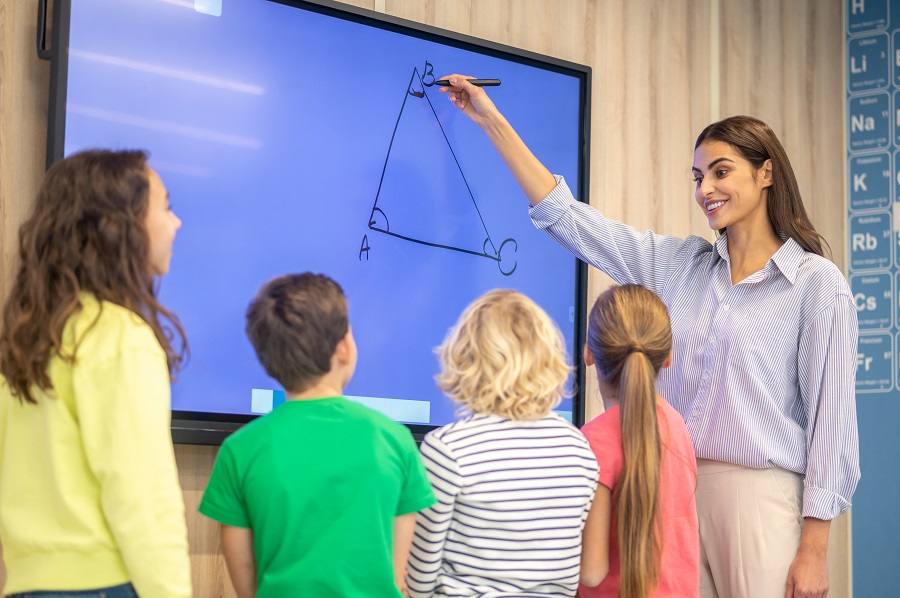Interactive Classroom Activities That Make Learning Engaging
Engaging students in the classroom has always been one of the biggest challenges for educators. Traditional lectures and textbook-based teaching methods often fall short in holding students’ attention and encouraging active participation. That’s where interactive classroom activities come in. These activities not only make lessons more enjoyable but also enhance student understanding, encourage collaboration, and foster creativity. In this article, we’ll explore the best interactive classroom activities that make learning engaging and fun for students of all ages.
Why Interactive Activities Matter
Interactive learning involves active participation by students, allowing them to take ownership of their learning process. Rather than passively receiving information, students engage with content through discussion, experimentation, and problem-solving. This hands-on approach improves comprehension, boosts retention, and creates a dynamic classroom atmosphere where students are excited to learn.
1. Think-Pair-Share
Think-Pair-Share is a quick and effective way to encourage student participation. The teacher poses a question, and students take a moment to think about their response. Then, they pair up with a classmate to discuss their thoughts. Finally, they share their answers with the class. This method allows even shy students to participate and helps learners refine their ideas through discussion before presenting to a larger group.
2. Classroom Quizzes and Games
Classroom quizzes using platforms like Kahoot, Quizizz, or Blooket can turn a regular lesson into a fun competition. These apps let teachers create real-time quizzes with multiple-choice questions that students answer using their phones or tablets. The gamified format increases student excitement and motivation. Teachers can use quizzes to review content, reinforce key concepts, or conduct quick assessments in an interactive way.
3. Role-Playing and Simulations
Role-playing allows students to step into someone else’s shoes and explore different perspectives. In a history lesson, students might reenact historical events; in a literature class, they could act out scenes from a novel. Simulations go a step further by creating real-life scenarios where students must work together to solve problems, such as simulating a courtroom trial or a mock debate. These activities promote critical thinking, empathy, and communication skills.
4. Group Projects and Presentations
Collaborative projects are a staple of interactive learning. Assigning students to work in groups on a shared task encourages teamwork, problem-solving, and creativity. Projects might involve researching a topic, creating a video, building a model, or preparing a presentation. When students present their work to the class, they develop public speaking and leadership skills while also reinforcing what they’ve learned.
5. Brainstorming Sessions
Brainstorming activities allow students to share ideas freely and build on one another’s thoughts. Teachers can write a central question or topic on the board and invite students to contribute ideas without judgment. This technique is especially useful in creative writing, science experiments, or project planning. It helps students learn to collaborate, listen actively, and think creatively.
6. Learning Stations
Setting up learning stations involves dividing the classroom into different areas, each with a specific task or activity. Students rotate through stations in small groups, spending a set amount of time at each. This method allows for differentiated instruction, where each station can target different learning styles or skill levels. It also breaks up monotony and keeps students moving and engaged.
7. Peer Teaching
Letting students take the role of the teacher can be a powerful learning experience. In peer teaching activities, students are assigned a topic to study and then teach to the class. This method reinforces the material for the presenter and provides a fresh perspective for the listeners. It builds confidence, strengthens communication skills, and encourages a deeper understanding of the subject.
8. Interactive Whiteboard Activities
Smartboards or interactive whiteboards offer numerous possibilities for classroom engagement. Teachers can use them to play educational games, solve problems together, or showcase multimedia content. Many apps and websites allow for drag-and-drop activities, drawing, and group participation. Interactive whiteboards make it easy to visualize abstract concepts and involve the whole class in learning.
9. Exit Tickets
Exit tickets are short activities or questions given at the end of a lesson to assess student understanding. Students write down their response before leaving the classroom. This provides teachers with quick feedback on what students learned, what confused them, and what needs to be revisited. It also encourages students to reflect on the day’s lesson in a simple but meaningful way.
10. Scavenger Hunts
Scavenger hunts can be adapted for any subject or grade level. For example, students might search for grammar errors in a text, solve math puzzles around the room, or identify key features of a science experiment. These activities add excitement and movement to the classroom while reinforcing academic content in an interactive way.
Benefits of Interactive Classroom Activities
- Increase student engagement and motivation
- Improve understanding and retention of information
- Foster collaboration and teamwork
- Build critical thinking and problem-solving skills
- Accommodate various learning styles and needs
- Create a more inclusive and positive classroom environment
Tips for Implementing Interactive Learning
- Start small—introduce one or two activities and expand gradually
- Set clear expectations and instructions to maintain classroom order
- Encourage participation from all students, not just the confident ones
- Use variety to keep activities fresh and exciting
- Reflect and adjust based on what works best for your students
Conclusion
Interactive classroom activities are essential for making learning meaningful and enjoyable. They transform passive lessons into active experiences where students participate, collaborate, and create. Whether it’s a group project, a digital quiz, or a classroom role-play, these activities help students connect with the material in a deeper way. As education evolves, incorporating more interactive strategies can lead to improved academic performance, stronger classroom relationships, and a lifelong love of learning.
By choosing the right activities and adapting them to student needs, teachers can build dynamic classrooms where learning is not just effective—but also fun and memorable.






